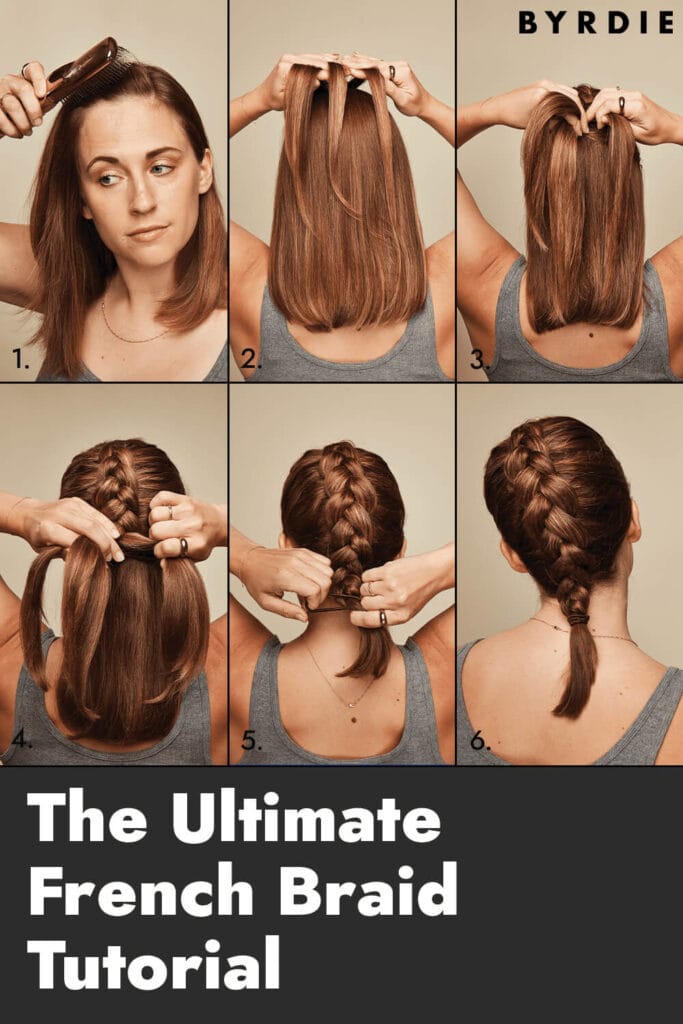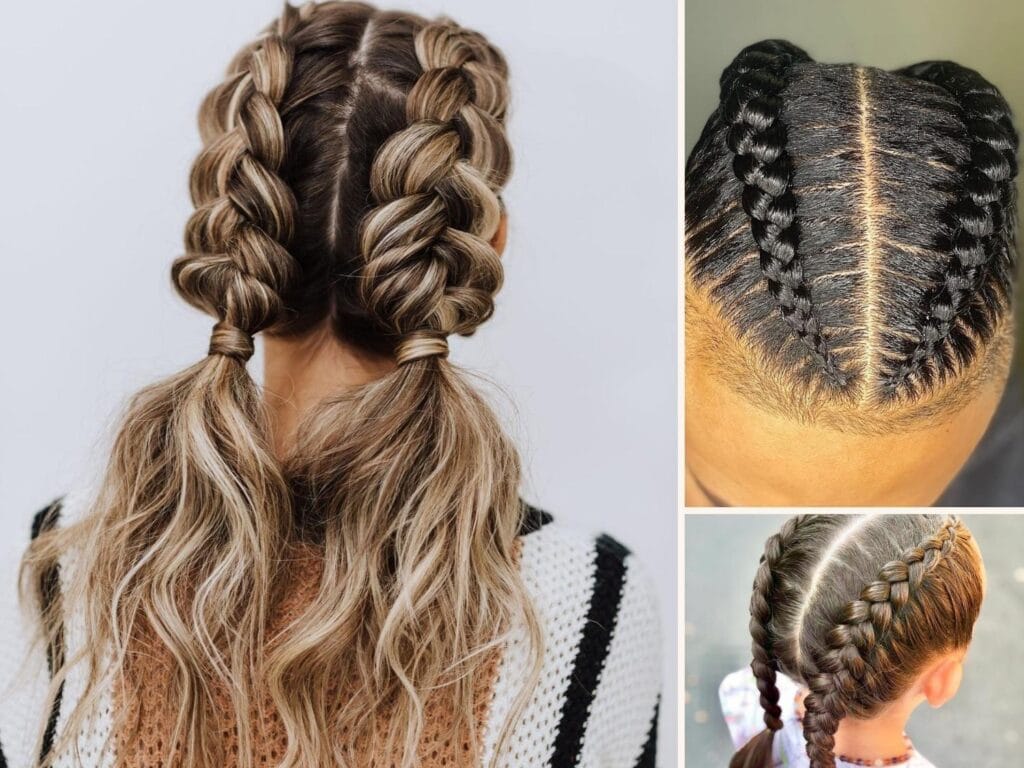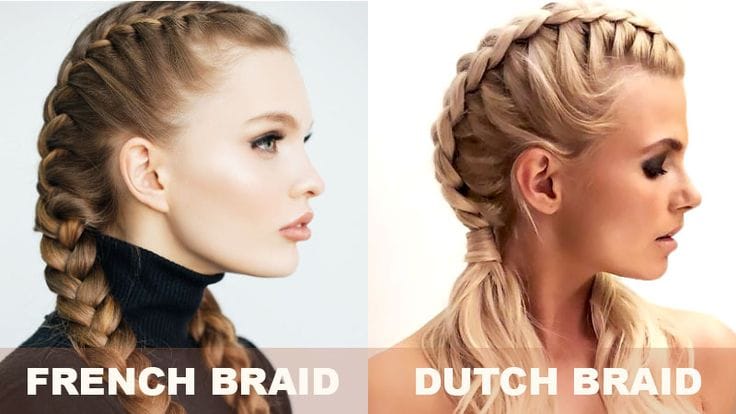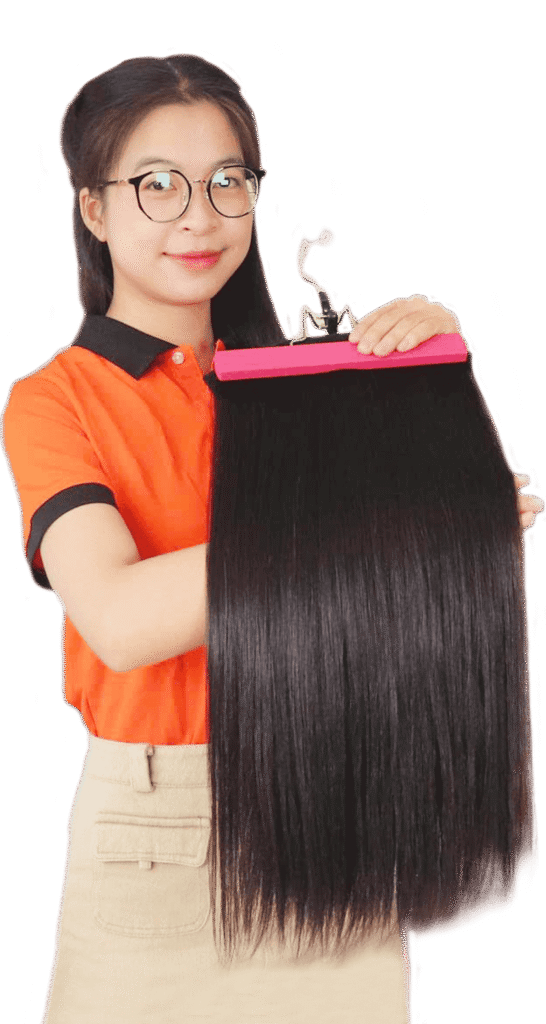Braids stand as timeless testaments to creativity and elegance in the vast and intricate hairstyling world. Two braided styles that have captivated the hearts of many are the French braid and the Dutch braid. Like intertwined strands of a story, these braids weave their way through cultural histories and modern fashion trends, creating a tapestry of beauty that transcends time. Whether you’re a braiding enthusiast or someone seeking a new style to embrace, join us as we delve into the intricacies of Dutch braid vs French braid, discovering the unique tales they tell and the stunning beauty they bring to the world of hair styling.
I. French Braids - The Classic Elegan

The French braid is a classic and sophisticated hairstyle that exudes elegance. French braids, also known as French plaits, are a classic and popular hairstyle characterized by three sections of hair braided together from the head’s crown to the neck’s nape. It is known for its seamless and polished appearance, making it an excellent choice for formal events and everyday wear. The braiding technique involves crossing sections of hair over each other, gradually incorporating more hair from the sides as the braid progresses downward. This creates a tight, woven pattern that lies flat against the scalp.
II. How To Do The French Braids?
French braids, also known as French plaits, are a classic and stylish way to braid your hair. Here’s a step-by-step guide to help you achieve a basic French braid:

- Start with clean, brushed hair: Ensure that it is free of tangles and knots by brushing it thoroughly. If you have finer hair that’s prone to tangling, you can use a detangling brush like the Wet Brush or a Tangle Teezer; if your hair is thicker, you might want to opt for a comb.
- Divide the hair: Separate a small section of hair near the crown of your head into 3 equal parts.
- Begin braiding: Cross the right section over the middle section, then cross the left section over the middle section.
- Add hair to the braid: As you continue braiding, pick up small sections of hair from the sides and add them to the outer sections before crossing them over the middle. This is the key characteristic of a French braid.
- Continue braiding: Repeat the process, incorporating more hair into the braid as you move downward.
- Secure the end: Once you reach the nape of your neck or desired length, continue with a regular three-strand braid and secure the end with a hair tie or another appropriate fastening method.

- Start with clean, brushed hair: Ensure that it is free of tangles and knots by brushing it thoroughly. If you have finer hair that’s prone to tangling, you can use a detangling brush like the Wet Brush or a Tangle Teezer; if your hair is thicker, you might want to opt for a comb.
- Divide the hair: Separate a small section of hair near the crown of your head into 3 equal parts.
- Begin braiding: Cross the right section over the middle section, then cross the left section over the middle section.
- Add hair to the braid: As you continue braiding, pick up small sections of hair from the sides and add them to the outer sections before crossing them over the middle. This is the key characteristic of a French braid.
- Continue braiding: Repeat the process, incorporating more hair into the braid as you move downward.
- Secure the end: Once you reach the nape of your neck or desired length, continue with a regular three-strand braid and secure the end with a hair tie or another appropriate fastening method.
III. Dutch Braids - Bold and Textured

The Dutch braid, on the other hand, offers a more textured and pronounced appearance. Dutch braids, also known as inverted or reverse braids, are a type of braided hairstyle where the strands of hair are crossed under each other, instead of over as in a regular or French braid. This technique creates a three-dimensional braid that appears to stand out from the scalp. It has gained popularity for its unique look.
IV. How To Create The Dutch Braids?
Dutch braids, also known as inverted or inside-out braids, are a stylish and versatile way to wear your hair. Here’s a step-by-step guide on how to do Dutch braids:

- Start with clean, detangled hair: Make sure your hair is free of knots and tangles before you begin.
- Divide the hair: Part your hair into two equal sections down the middle of your head.
- Pick up a small section of hair: Start at the hairline, near the forehead, and divide it into three equal sections.
- Cross the strands under: Instead of crossing the strands over each other as in a traditional braid, cross them under each other. The left strand goes under the middle strand, and then the right strand goes under the middle strand.
- Add more hair: As you continue braiding, pick up small sections of hair from the sides and add them to the outer strands before crossing them under the middle strand.
- Repeat the process: Continue crossing the strands under and adding hair from the sides as you work your way down the length of the hair.
- Secure the end: Once you reach the nape of your neck or the desired length, you can secure the braid with a hair tie or other hair accessory.

- Start with clean, detangled hair: Make sure your hair is free of knots and tangles before you begin.
- Divide the hair: Part your hair into two equal sections down the middle of your head.
- Pick up a small section of hair: Start at the hairline, near the forehead, and divide it into three equal sections.
- Cross the strands under: Instead of crossing the strands over each other as in a traditional braid, cross them under each other. The left strand goes under the middle strand, and then the right strand goes under the middle strand.
- Add more hair: As you continue braiding, pick up small sections of hair from the sides and add them to the outer strands before crossing them under the middle strand.
- Repeat the process: Continue crossing the strands under and adding hair from the sides as you work your way down the length of the hair.
- Secure the end: Once you reach the nape of your neck or the desired length, you can secure the braid with a hair tie or other hair accessory.
V. French Braid Vs. Dutch Braid: What Are The Differences?
French braids and Dutch braids are both popular types of braided hairstyles and while they share some similarities, there are key differences in their techniques that result in distinct looks. Here are the main differences between French braids and Dutch braids:

Dutch Braid vs French Braid: Braiding Technique
- A French braid involves crossing sections of hair over each other, with each new section added from the sides of the braid. The hair is braided close to the scalp, creating a sleek and close-to-the-head look.
- In a Dutch braid, also known as an inverted or inside-out braid, involves crossing sections of hair under each other instead of over. Like the French braid, new sections are added from the sides, but the under-crossing technique gives it a distinct appearance.
Dutch Braid vs French Braid: Orientation
- In French braids, the strands are crossed over each other, moving towards the center of the braid, which leads to the results in the braid sitting on top of the hair, giving it a more three-dimensional appearance.
- The strands in a Dutch braid are crossed under each other, moving away from the center of the braid. This results in the braid sitting on top of the hair, but the individual sections stand out more prominently.
→ French braids tend to be tight and tidy, giving a polished and refined look. While Dutch braids have a more textured and voluminous look compared to French braids.
VI. Conclusion
In conclusion, both French braids and Dutch braids showcase the artistry of hairstyling and offer unique aesthetics that cater to different preferences and occasions. The French braid, with its timeless elegance and romantic allure, is perfect for formal events or a classic everyday look. On the other hand, the Dutch braid’s bold and edgy appearance makes it a trendy choice for those seeking a more modern and distinctive style. Whether you opt for the intricate charm of the French braid or the bold statement of the Dutch braid, both hairstyles celebrate the versatility and creativity within the realm of braided beauty.


 BEST SELLING PRODUCTS
BEST SELLING PRODUCTS Wig Hair
Wig Hair WHOLESALE
WHOLESALE Contact us
Contact us Sale Events
Sale Events
